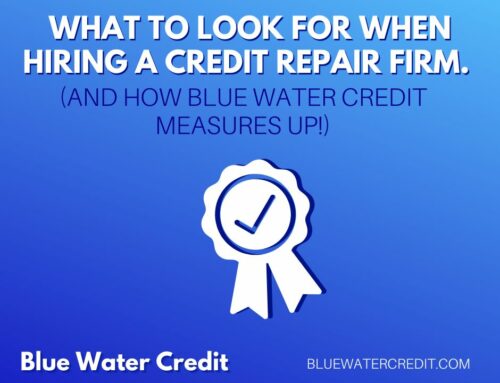
Since 1965, the FHA has been part of the Department of Housing and Urban Development’s Office of Housing (HUD), continuing to assist hundreds of thousands of borrowers purchase a home or refinance their existing home every year.
FHA loans were extremely popular with borrowers in the years right after the mortgage meltdown, helping to stabilize the real estate market. In fact, in 2010, FHA loans made up just under 25% of the entire mortgage purchase market – or 1 in 4 purchase loans
However, there is often confusion and many misconceptions about FHA among the public, preventing them from taking full advantage of its programs. So we’re going to bring you an FHA fact sheet – including clarifying the FHA rules for lending when it comes to credit scores.
Most borrowers need only a 3.5% down payment to buy a home with an FHA loan.
These days, it’s extremely difficult for most people to save the 20% down payment necessary with most traditional loans. In fact, the lack of a down payment is the #1 reason why most renters can’t become homeowners. But one of the great benefits of an FHA loan is that you don’t generally have to put 20% or even 10% down for a down payment on a home purchase
FHA offers home loans with only 3.5% down payments, which makes it far easier for the average person to buy a home. With 100% financing seemingly a thing of the past, FHA loans remain the best bet for first-time homebuyers or many others.
You don’t need a perfect (or even good!) credit score to get an FHA loan.
If your credit score is below par, you’re probably experiencing a lot of rejection – or high interest rates – when you go to apply for a loan. But with FHA-backed loans, borrowers with substandard credit are readily accepted. In fact, the FHA mandates that most borrowers need only a 580 credit score or higher to qualify for a loan to with their lowest 3.5% down payment.
Believe it or not, borrowers with credit scores below 500 may still qualify.
Applicants with credit scores below 500 are usually ineligible for FHA loans (or any other kind of loan!), but the FHA may make an exception under special conditions. Those with a sub-500 score may still get a loan if there are other special factors in play like nontraditional credit histories, a significant amount of assets, or even past bankruptcies that are dragging their score down. Incredibly, for borrowers with a score as low as 500, it’s possible to buy with an FHA loan by putting 10% down.
But you’ll need to make sure your lender is on board, too.
It’s important to note that while the FHA grants these loans with low credit scores per their requirements, remember that they aren’t the ones lending the money – they are just insuring the loan. So the actual lender or bank that offers the loan may have more stringent credit guidelines for borrowers with very low scores.
Borrowers with “light” credit histories may still qualify for an FHA loan.
There are millions of Americans with little or no established credit record, called “Credit Invisibles.” However, FHA loans usually only require two credit tradelines for applicants. Even if you don’t have those two major tradelines, you might still qualify with alternate accounts.
Here are some other highlights and features of FHA loans:
The FHA offers more than just one standard loan.
In addition to the most-popular 30-year fixed loan, the FHA offers a1-year adjustable rate mortgage (ARM) as well as 3, 5, 7, and 10-year ARM options.
Borrowers have flexibility when it comes to collecting their down payment.
FHA loans offer greater flexibility, as borrowers can use gifts from family members or grants from government down-payment assistance programs to make their down payment, which helps even more people access the dream of home ownership.
Closing costs can come from a variety of sources.
Conventional loans restrict the source of money used for closing costs, but with FHA loan, borrowers can ask home sellers, builders, and lenders to pay some of the buyer’s closing costs. These costs include the appraisal, credit report, or title and escrow fees, as well as other expenses. This gives the buyer even more options to reduce the total cash they need to bring in to close.
FHA loans can help you buy different properties than just a single family home.
FHA loans allow borrowers to purchase single family homes, but also condominiums, townhomes, halfplexes, duplexes, tri-plexes, and four-plexes, and even mobile and manufactured homes. FHA loans also allow for new construction.
However, FHA loans are not used to fund rental properties, investment properties, or vacation homes.
FHA loans are perfect for buying a “fixer upper.”
The FHA offers a special rehab loan called a “streamlined” 203(k) that lends based on the projected value of the home after the repairs are done, granting the borrower the cash needed (up to $35,000 in most cases) to make those fixes when the loan closes.
The FHA also offers refinance loans.
Be aware of appraisal rules, loan limits, and other fine print with FHA loans.
All FHA loans require two mortgage insurance premiums:
The upfront premium is paid when the borrower first gets the loan, as comes to 1.75% of the loan amount. The annual premium, which is paid monthly with the mortgage payment, is based on the length of the loan, the amount borrowed and the initial LTV, or loan-to-value ratio. For 30-year loans with less than 5% down payments, the annual premium comes to 1.35% of the loan.
Other considerations with FHA loans: Appraisers also need to be on the FHA approved
Appraisers also need to be on the FHA approved list, and there is heavier scrutiny and restriction for items that need to be repaired when taking out an FHA loan.
Just like conventional loans, there are limits to the amount of a loan the FHA will fund. The FHA calculates loan limits annually by using a value worth 115% of the median home price in each area, with a hard ceiling of $625,500
In Sacramento and Placer Counties, the FHA loan limit comes to $488,750 for a single family residence, $625,700 for a duplex, and climbing from there.
***
If you have questions about FHA loans or improving your credit score so you can take advantage of FHA’s great low rates and down payments, contact Blue Water Credit!




